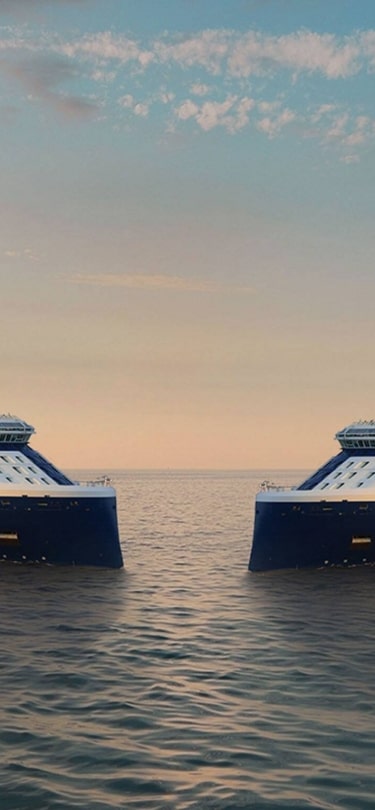While in Italy, going shopping in Florence is almost as culturally rich an experience as eating pizza in Naples or visiting the Vatican. Whether you’re a lover of haute couture or a seeker of vintage treasures, this fashion-forward metropolis delivers on all fronts.
Best of all, if you’re feeling anxious about neglecting the city’s culture after another afternoon lost to rack raiding, you’ll find that, to an extent, Florence’s medieval treasures and its best shops are often merged. The Ponte Vecchio, or the Oltrarno with its longstanding artisan community, are two excellent examples of this.
Shopping hours in the center of the “Jewel of the Renaissance” frequently extend to 8 p.m. Read on to discover where to find the best shopping in Florence and what to buy when you get there.
Ponte Vecchio
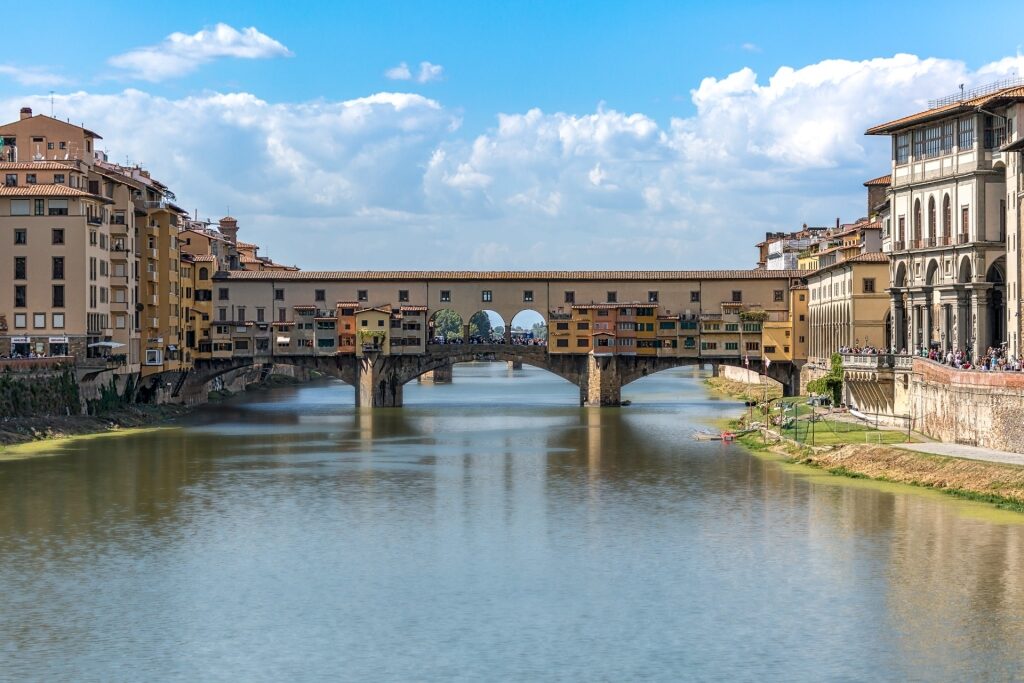
Ponte Vecchio
Florence is known for its iconic landmarks, and alongside the marble-clad Duomo, the Ponte Vecchio is one of its most recognizable symbols. Constructed in the 10th century, it was rebuilt in 1345, nearly a hundred years before the Duomo, and has remained pretty much the same ever since.
Before 1595, the Ponte Vecchio had housed fishmongers, butchers, and tanners. Due to the pungency of those trades, and as a move to enhance the city’s prestige, it was decreed that only jewellers and goldsmiths could inhabit the bridge.
And so it remains. Be sure to browse beneath the flags above Fratelli Piccini, a jeweler that has enjoyed this illustrious address for over a century. For something with specifically Florentine designs, look for the well-established Gioielli or experience the superb service of Firenze Forever.
Via de’ Tornabuoni
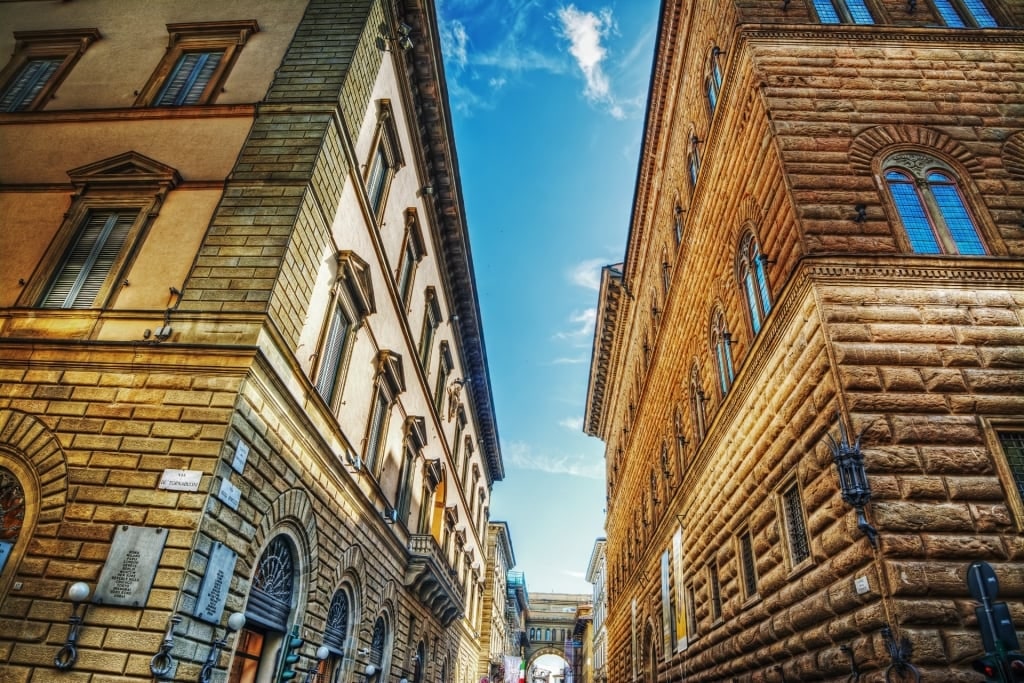
Via de’ Tornabuoni
In the city that launched Italian haute couture, the sheer density of luxury shopping corners and boutique-bejeweled streets can feel daunting. To get your bearings, begin at Via de’ Tornabuoni.
Today, it’s the city’s premier shopping street but previously it was an avenue for medieval displays of Florentine power and a venue for horse races.
Via de’ Tornabuoni is surprisingly broad for the historic center and still lined with the palatial former homes of the medieval great and good, their former first floors now shaded by the stylishly trimmed awnings of high-end brands.
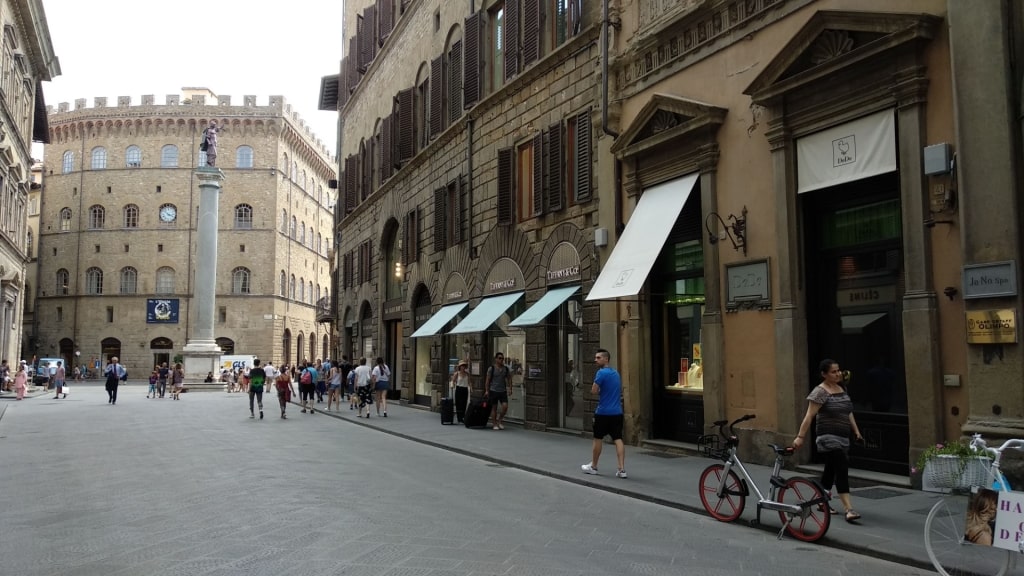
Via de’ Tornabuoni Photo by Greenesol on Wikimedia Commons, licensed under CC BY-SA 4.0
No room for horses now, with all the boutique bags in tow. Local hero Gucci has a shop here, as does Roberto Cavalli, and you’ll be hypnotized by the facets twinkling in the Bulgari and Damiani window displays.
Ferragamo, another famous Florentine fashion brand, has its HQ in the former palazzo of a family of medieval bankers. In the cellars, you’ll find its museum, which charts Salvatore Ferragamo’s career and includes curios such as custom stilettos designed for Marilyn Monroe.
Via dei Calzaiuoli
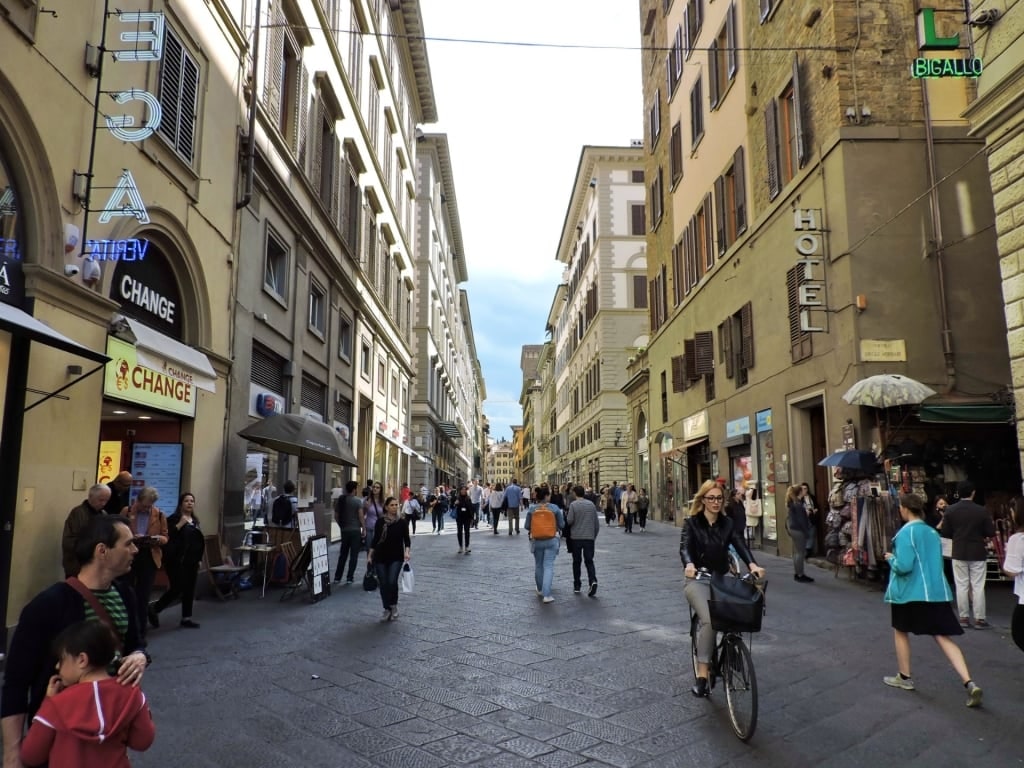
Via dei Calzaiuoli Photo by Dimitris Kamaras on Wikimedia Commons, licensed under CC BY 2.0
Pedestrianized Via dei Calzaiuoli draws an elegant connection between the magnificent sculptures of Piazza della Signoria and Piazza del Duomo.
This street hasn’t always been so long, so wide, or even so named. In medieval times, Via dei Calzaiuoli was subdivided into areas inhabited by specific trades, such as cheesemakers on the now defunct Via dei Cacioli. Via dei Calzaiuoli, in turn, means the street of shoemakers, which is what the street became when it was widened in the 15th century.
Today, the offering is also much broader, with high street names such as Calzedonia. You’ll also find La Rinascente here—a six-floor department store with a rooftop café serving up superb Duomo views alongside rich and bitter espresso. It’s an essential stop while shopping in Florence.
Or head to the 200-year-old Caffè Gilli—no views here, though, except the one behind glass of pastel-hued Florentine pastries.
Via Roma
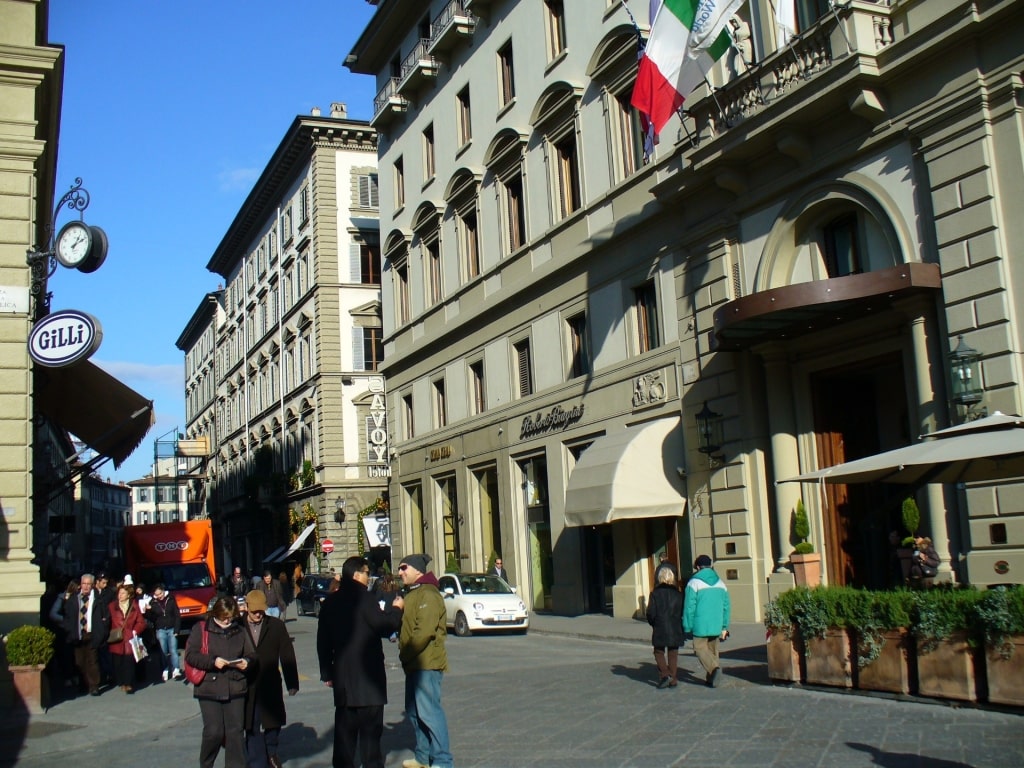
Via Roma Photo by Freepenguin on Wikimedia Commons, licensed under CC BY-SA 3.0
Like Via dei Calzaiuoli, Via Roma is another of the grand promenades that crisscross the city’s medieval heart. Along with Via dei Calzaiuoli, it helps create a shopping zone in the center of Florence.
It’s home to high-end names including Armani, Prada, and Miu Miu. But above all else, Via Roma is probably best known for the extremely popular Luisa Via Roma. This century-old boutique has an interior almost as dazzling as the garments on sale. If your timing is fortuitous, you’ll happen across one of its occasional in-store runway shows.
Mercato Centrale

Mercato Centrale
A late-19th-century metal and glass landmark amid Florence’s dark stone centro storico, the Mercato Centrale is one of the city’s major food hubs.
Reopened in 2014 after a top-to-toe renovation, the market’s ground floor has retained its original purpose as a produce and meat market. Here, Florentines shop for their fragrant black truffles, slabs of Chianina beef, and fresh pici pasta.
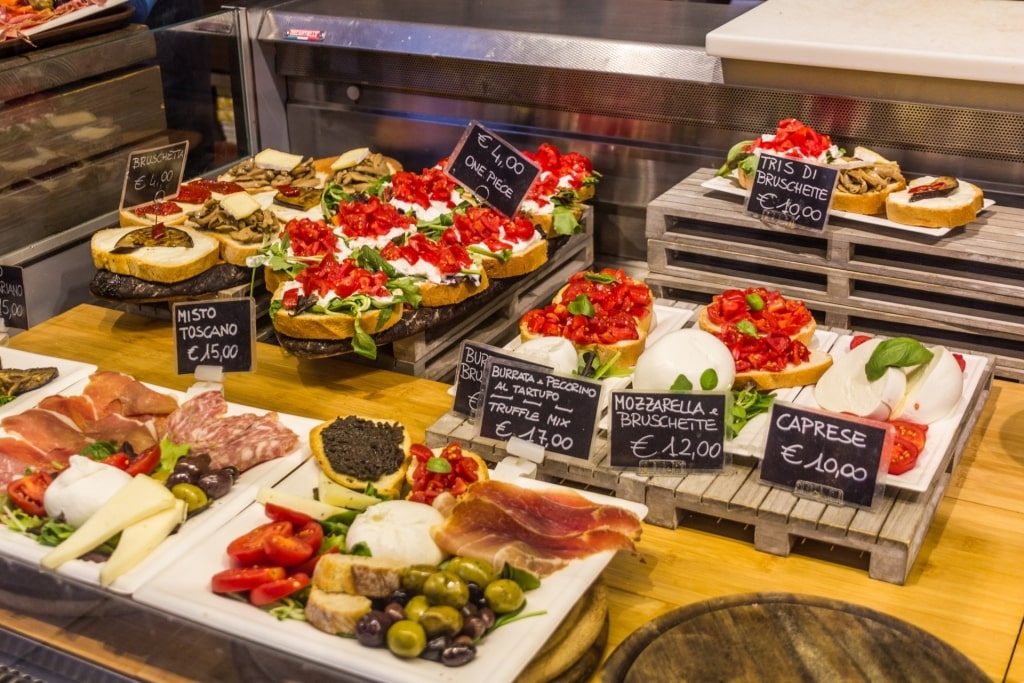
Mercato Centrale
Head upstairs to the second floor and you enter one of the best food halls in Tuscany. It’s the ideal place to fuel up ahead of an afternoon’s shopping in Florence. The stalls and restaurants showcase some of the country’s finest produce, serving up everything from margherita pizza to tripe sandwiches.
There’s also an excellent wine shop, the Enoteca Chianti Classico. Expect to find lots of good bottles of Montepulciano, Chianti Classico, and rare vintages of Brunello di Montalcino.
Read: Best Things to Do in Florence at Night
Via Santo Spirito
A narrow street of pockmarked flagstones and parked Vespas, Via Santo Spirito concludes at the piazza of the same name, where you’ll find the Brunelleschi-devised Santo Spirito church.
But we’re here for the shopping. Via Santo Spirito is located on the south side of the Arno River, in the Oltrarno district. The Oltrarno is historically known as a center for artisan workshops and independent shops, with Via Santo Spirito one of its main artisan furrows to plow.
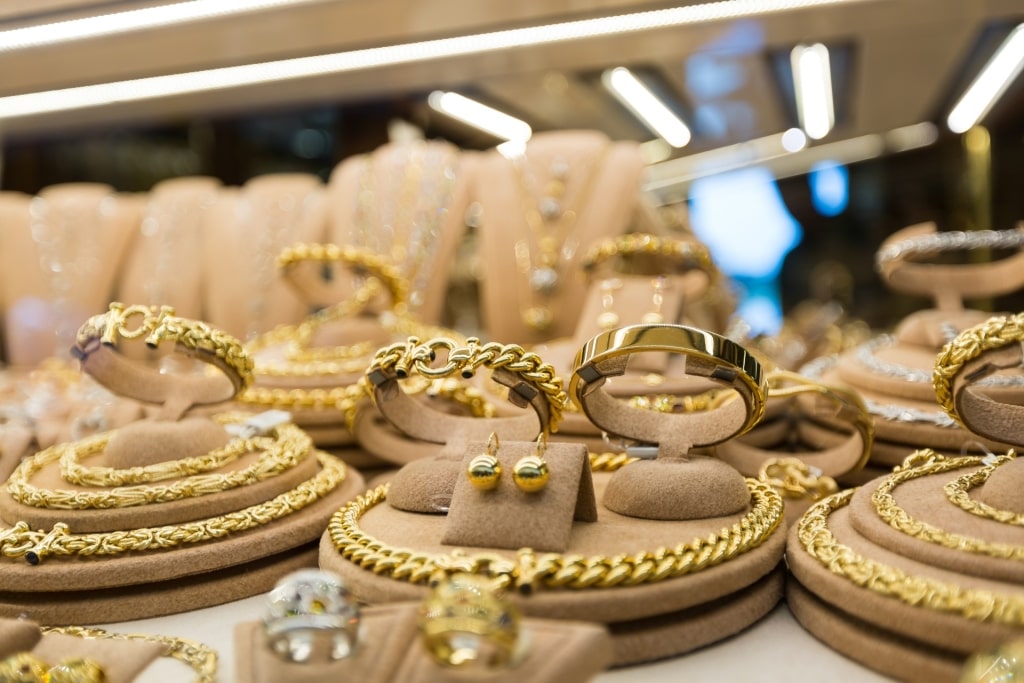
Jewelry
You’ll come across tea shops, indie clothes stores, and engaging artisan boutiques. Jewellery designer Angela Caputi is one of the big names on this historic artery—her pieces hearken back to the Golden Age of Hollywood, elegantly wrought out of only locally sourced materials.
Another with an address on Via Santo Spirito is Marina Calamai. This Florentine artist sells wittily designed pieces of jewellery using a Renaissance-era casting method. Working in various precious metals, her creations are grouped within interesting themes such as “Alcoholico”, with pieces like negroni-inspired brooches and Martini-glass cufflinks.
Finally, L’Ippogrifo is another shop breathing new life into ancient techniques. Almost a museum of copper etching with 16th-century techniques on display, this shop, run by the Raffaelli family, sells etchings with Florentine motifs as well as surrealist prints.
Via dei Serragli
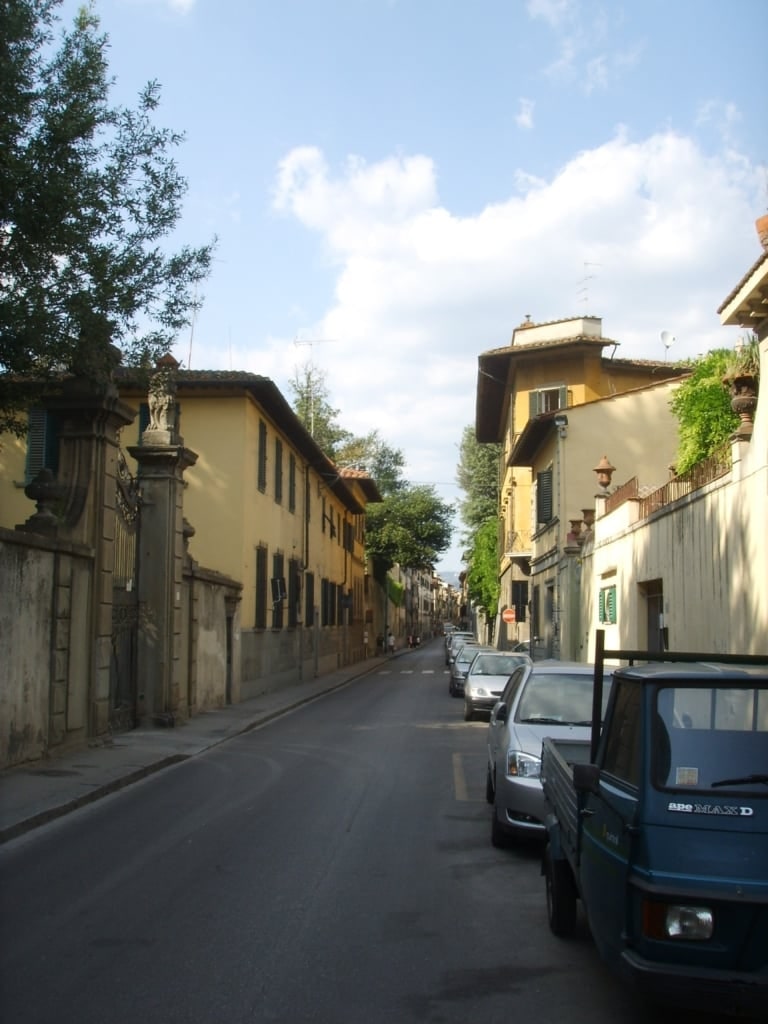
Via dei Serragli Photo by sailko on Wikimedia Commons, licensed under CC BY-SA 3.0
Crossing Via Santo Spirito is Via dei Serragli, another Oltrarno street with excellent shopping opportunities. While Santo Spirito is more concerned with artisan workshops, Via dei Serragli has a collection of stunning boutiques and vintage clothing stores.
Ceri Vintage is one of the most well-known of the latter category. The Tuscan sun gleams on its sign’s gold print, promising much and delivering as well. If you’re looking for vintage Stella McCartney or Burberry, this is where you want to be.
And while you may not have the suitcase space—or the inclination—to pick up a new wedding dress on your trip, it’s worth stepping inside the Anna Fuca Atelier. Not only for the original designs, but for the ornate ceilings and chandeliers of this talented Sicilian designer’s studio.
Also found here is the women’s clothing boutique Il Cortile di Marianna Bartolucci. It’s built up a reputation for its elegant lingerie, as well as hand-stitched footwear. While you’re here, you can also divert to Via Maggio to source Florentine-inspired souvenirs at the Company gift shop, boho attire in Dexter, and sustainable footwear in Vincent Croce.
Scuola del Cuoio

Scuola del Cuoio
Scuola del Cuoio is the most intriguing of the many places in Florence to pick up skillfully wrought leather goods.
The school was founded in 1950 as an initiative to help war orphans learn a trade. A joint venture between local families and the Franciscan friars, the school is still based in the monastery’s dormitory and run by members of one of the original founding families.
It’s located in the Santa Croce neighborhood—a hub for leatherwork since medieval times—and you can here shop for handbags, belts, wallets, and more, exquisitely stitched from snakeskin, alligator, or cow leather.
Have them monogrammed for a personal gift and know that your money is going into the coffers of a historic and admirable organization. If you’re also inspired to try some leather-making yourself, courses are available for visitors. Shopping in Florence doesn’t get more spiritually nourishing than a visit to Scuola del Cuoio.
Mercato delle Pulci

Antiques
The Mercato delle Pulci is Florence’s leading flea market. It’s situated in the Piazza Pietro Annigoni in the Sant’Ambrogio neighborhood, directly across from the food market.
With euros folded into your wallet—carrying cash is advisable here—and morning espresso pulsing through your veins, dive into this treasure trove of vintage collectibles, furniture, vinyl, and some incredible antiques at killer prices. And it’s possible to improve those prices through skillful and polite haggling.
Read: Two Days in Florence
Via della Vigna Nuova
Connected to Via de’ Tornabuoni, Via della Vigna Nuova is another of the historic center’s main shopping streets. It points south towards the Arno and to the artisan workshops of the Oltrarno located across the water.
This geographical orientation seems to somewhat inform what you’ll find on this eclectic strip—luxury goods mingled with some fabulous design pieces and mainstream favorites.
Inhale the smell of leather as you pass Benheart—a local leatherware favorite run by a Florentine. Next, you’ll likely be lured to the rainbow of homeware on display in the window of Mario Luca Giusti.
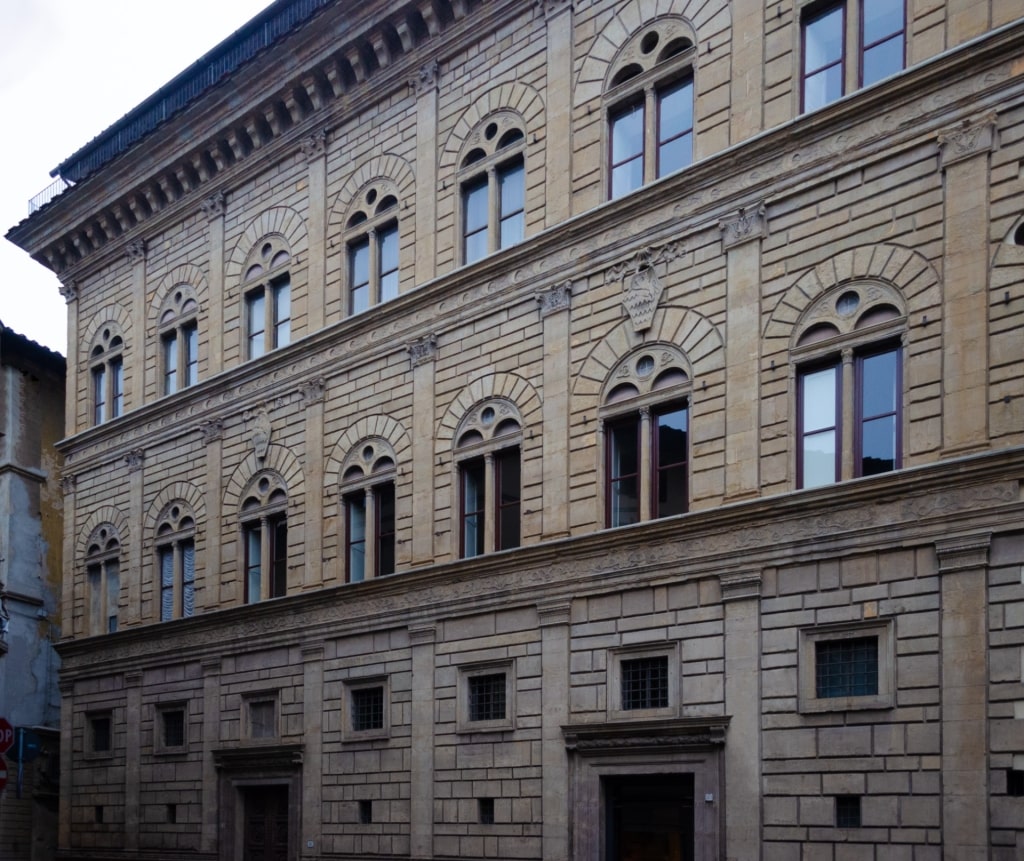
Rucellai Palace
As you hit the middle of the street, you’ll be close to the Rucellai Palace—Via della Vigna Nuova’s most impressive building. Its loggia is now one of the most exquisitely curated window displays in this Italian city, currently inhabited by high-end menswear boutique Stefano Ricci.
In its grand shadow, you’ll find the Cameo Italiano jewellery store. This hidden gem has a specialty in producing gorgeous cameo-adorned pieces.
Mercato Sant’Ambrogio
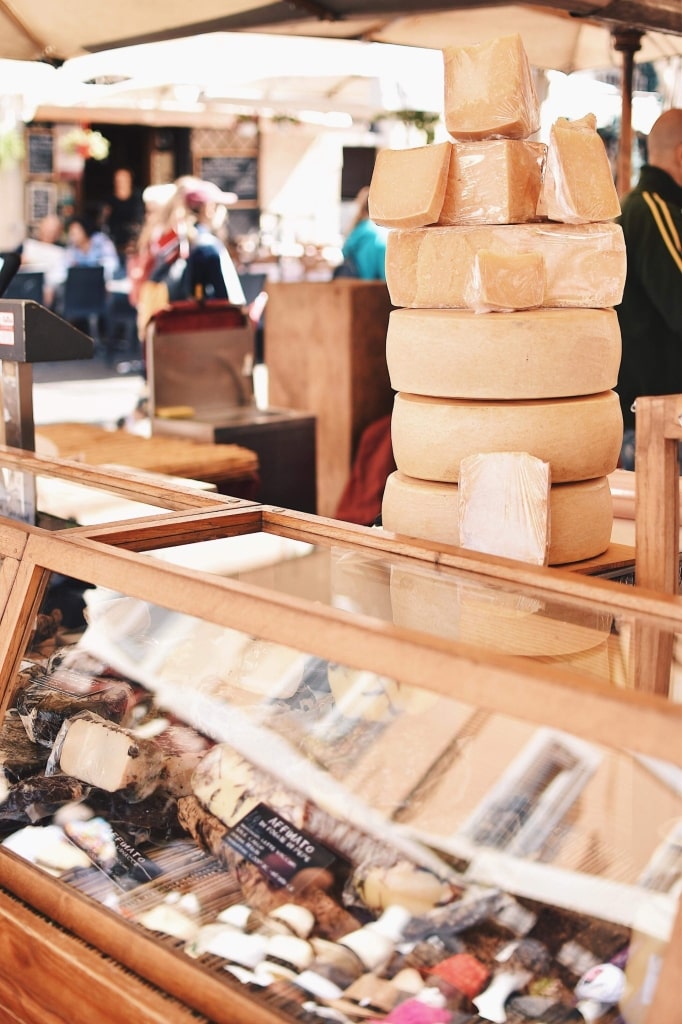
Mercato Sant’Ambrogio
East of the historic district is the Mercato Sant’Ambrogio, one of the city’s longstanding and most traditional produce markets. It’s located about a 15-minute walk from the Duomo, close to the Mercato delle Pulci flea market.
Open for business every weekday morning, this handsome covered market—filled with the odour of fresh greens and freshly baked pane Toscano—has remained pretty much exactly as when it first set out its stalls in 1873. Acquire portable bottles of local olive oil here, or dried packs of porcini to take home.
Smaller than the Mercato Centrale, it’s considered to have a more authentic Florentine vibe, away from the city center and without the central market’s updated food hall. Beyond the edible goods, the market has over the years expanded to include some vintage clothing and jewelry stalls.
The Mall Firenze

The Mall Firenze Photo by sailko on Wikimedia Commons, licensed under CC BY-SA 3.0
If you have the time to head out of town, make sure to plan a raid on The Mall Firenze. A retail outlet village located south-east of the city, The Mall Firenze offers last season’s styles at knock-down prices from luxury brands such as Gucci and Versace.
If you don’t have a rental car, hop on the direct bus service with fellow bargain hunters. These depart every half an hour from the Santa Maria Novella station. The journey lasts just under an hour.
Via della Spade
A historic street that’s become an increasingly trendy place to shop, Via della Spade is found just off Via della Vigna Nuova. It’s home to a collection of chic clothing stores, including the super soft range from Blumelange Cashmere.
There’s also the Mio Concept Store, an excellent place to pick up some offbeat, kitschy Italian souvenirs by Florentine designers and artists.
Another of the more established residents is helpful Angela of the AND Firenze boutique—an excellent choice for stylish, good-value Italian clothes. If it’s lunchtime, rush to beat the line at the venerable Trattoria Marione, one of the city’s most beloved traditional restaurants.
Via della Spada also has an important place in cocktail history. Caffè Casoni used to be located on the corner where the street meets Via de’ Tornabuoni. It was here that Count Camillo Negroni fatefully asked for gin instead of soda water in his usual Americano, and with that, the Negroni was born.
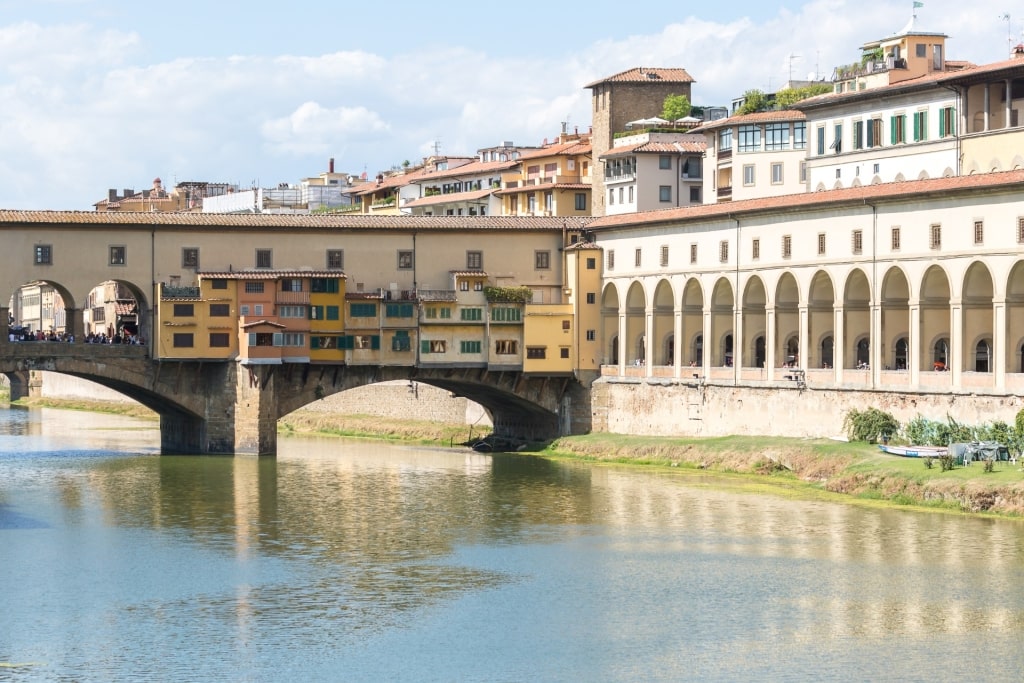
Ponte Vecchio
Explore the boutiques, bargains, and bling of the best shopping in Florence on a cruise with Celebrity. Browse our cruises to Florence and plan a vacation to this irresistible city today.


